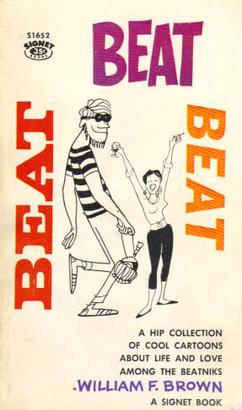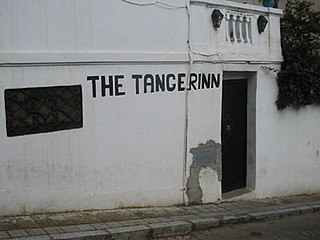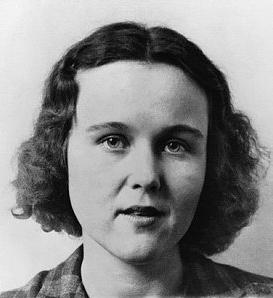Related Research Articles

Jean-Louis Lebris de Kérouac, known as Jack Kerouac, was an American novelist and poet who, alongside William S. Burroughs and Allen Ginsberg, was a pioneer of the Beat Generation.

William Seward Burroughs II was an American writer and visual artist. He is widely considered a primary figure of the Beat Generation and a major postmodern author who influenced popular culture and literature. Burroughs wrote eighteen novels and novellas, six collections of short stories and four collections of essays, and five books have been published of his interviews and correspondences; he was initially briefly known by the pen name William Lee. He also collaborated on projects and recordings with numerous performers and musicians, made many appearances in films, and created and exhibited thousands of visual artworks, including his celebrated "Shotgun Art".

Beatniks were members of a social movement in the 1950s and early 1960s who subscribed to an anti-materialistic lifestyle. They rejected the conformity and consumerism of mainstream American culture and expressed themselves through various forms of art, such as literature, poetry, music, and painting. They also experimented with spirituality, drugs, sexuality, and travel. The term “beatnik” was coined by San Francisco Chronicle columnist Herb Caen in 1958, as a derogatory label for the followers of the Beat Generation, a group of influential writers and artists who emerged in the late 1940s and early 1950s. The name was inspired by the Russian suffix “-nik”, which was used to denote members of various political or social groups. The term “beat” originally was used by Jack Kerouac in 1948 to describe his social circle of friends and fellow writers, such as Allen Ginsberg, William S. Burroughs, and Neal Cassady. Kerouac said that “beat” had multiple meanings, such as “beaten down”, “beatific”, “beat up”, and “beat out”. He also associated it with the musical term “beat”, which referred to the rhythmic patterns of jazz, a genre that influenced many beatniks.

The Beat Generation was a literary subculture movement started by a group of authors whose work explored and influenced American culture and politics in the post-World War II era. The bulk of their work was published and popularized by Silent Generationers in the 1950s, better known as Beatniks. The central elements of Beat culture are the rejection of standard narrative values, making a spiritual quest, the exploration of American and Eastern religions, the rejection of economic materialism, explicit portrayals of the human condition, experimentation with psychedelic drugs, and sexual liberation and exploration.

Naked Lunch is a 1959 novel by American writer William S. Burroughs. The book is structured as a series of loosely connected vignettes, intended by Burroughs to be read in any order. The reader follows the narration of junkie William Lee, who takes on various aliases, from the U.S. to Mexico, eventually to Tangier and the dreamlike Interzone.

The Tangerinn is a bar in Tangier, Morocco, a place of nostalgia for fans of beat generation or beatnik poets. The bar is adjoined to the Hotel El Muniria where author William S. Burroughs wrote his famous novel Naked Lunch in room #9. Pictures of beat generation poets such as Allen Ginsberg and Jack Kerouac hang on the walls.

Joan Vollmer was an influential participant in the early Beat Generation circle. While a student at Barnard College, she became the roommate of Edie Parker. Their apartment became a gathering place for the Beats during the 1940s, where Vollmer was often at the center of marathon, all-night discussions. In 1946, she began a relationship with William S. Burroughs, later becoming his common-law wife. In 1951, Burroughs killed Vollmer. He claimed, and shortly thereafter denied, the killing was a drunken attempt at playing William Tell.

Herbert Edwin Huncke was an American writer and poet, and an active participant in a number of emerging cultural, social and aesthetic movements of the 20th century in America. He was a member of the Beat Generation and is reputed to have coined the term.

Janet Michelle "Jan" Kerouac was an American writer and the only child of beat generation author Jack Kerouac and Joan Haverty Kerouac.

Junkie: Confessions of an Unredeemed Drug Addict is a novel by American beat generation writer William S. Burroughs, initially published under the pseudonym William Lee in 1953. His first published work, it is semi-autobiographical and focuses on Burroughs' life as a drug user and dealer.

Queer is an early short novel by William S. Burroughs. It is partially a sequel to his earlier novel, Junkie, which ends with the stated ambition of finding a drug called yage. Queer, although not devoted to that quest, does include a trip to Latin America looking for the substance.

Lucien Carr was a key member of the original New York City circle of the Beat Generation in the 1940s and also a convicted manslaughterer. He later worked for many years as an editor for United Press International.

Desolation Angels is a semi-autobiographical novel written by Beat Generation author Jack Kerouac, which makes up part of his Duluoz Legend. It was published in 1965, but was written years earlier, around the time On the Road was in the process of publication. The events described in the novel take place from 1956-1957. Much of the psychological struggle which the novel's protagonist, Jack Duluoz, undergoes in the novel reflects Kerouac's own increasing disenchantment with the Buddhist philosophy. Throughout the novel, Kerouac discusses his disenchantment with fame, and complicated feelings towards the Beat Generation. He also discusses his relationship with his mother and his friends such as Allen Ginsberg, Neal Cassady, Lucienn Carr and William S. Burroughs. The novel is also notable for being a relatively positive portrayal of homosexuality and homosexual characters, despite its use of words that were at the time considered homophobic slurs.

And the Hippos Were Boiled in Their Tanks is a novel by Jack Kerouac and William S. Burroughs. It was written in 1945, a full decade before the two authors became famous as leading figures of the Beat Generation, and remained unpublished in complete form until 2008.
Oliver C. G. Harris is a British academic and Professor of American Literature at Keele University. He is the author and editor of seventeen books, including a dozen editions of works by William S. Burroughs: Letters, 1945–1959 (1993), Junky: the definitive text of Junk (2003), The Yage Letters Redux (2006), Queer (2010), The Cut-Up Trilogy, The Soft Machine, Nova Express, and The Ticket That Exploded (2014), Blade Runner: A Movie (2019), Minutes to Go Redux (2020), The Exterminator Redux (2020), BATTLE INSTRUCTIONS (2020) and Dead Fingers Talk (2020). In 2022, he published two short books of essays, A Burroughs Triptych and Making Naked Lunch and in 2023 a collaborative hybrid of criticism and memoir, Two Assassins: William Burroughs/Hassan Sabbah. He is President of the European Beat Studies Network.
Jack Kerouac was an American novelist and poet. He is considered a literary iconoclast and, alongside William S. Burroughs and Allen Ginsberg, a pioneer of the Beat Generation. Kerouac is recognized for his method of spontaneous prose. Thematically, his work covers topics such as Catholic spirituality, jazz, promiscuity, Buddhism, drugs, poverty, and travel. Kerouac used the name "Duluoz Legend" to refer to his collected autobiographical works.
Beat Scene is a UK-based magazine dedicated to the work, the history and the cultural influences of the Beat Generation. As well the best known and more obscure Beat novelists and poets this has included artists, musicians filmmakers and publishers. The content largely consists of articles, memoirs, interviews and reviews.
Fast Speaking Music is a label founded by poet Anne Waldman and Ambrose Bye, in New York City. Releases by Fast Speaking Music have prominently featured jazz, the literary, and performance art. Its recordings have been made featuring poets, musicians, and interdisciplinary artists such as Anne Waldman, Amiri Baraka, Clark Coolidge, Meredith Monk, Akilah Oliver, Thurston Moore, Thomas Sayers Ellis, and many others. Variously associated with contemporary poetry, Conceptual Poetics and Conceptual Art, the Beat Generation, New York School, Black Arts Movement, New American Poetry, Nuyorican Poetry, Abstraction, Dematerialized Art, rock & roll, jazz, and experimental music and cinema, artists in the Fast Speaking Music catalog have roots that stretch across a broad spectrum of disciplines and art practices ranging from letters to music, dance, film and visual arts. Musicians featured on the label include Daniel Carter, Ha-Yang Kim, Devin Brahja Waldman, Max Davies, and Thurston Moore.
Haldon Chase, often referred to as "Hal Chase", was a Denver-born archaeologist, who was known for his archaeological research on several rock art sites at Colorado. Outside the field of archaeology, he was best known as part of the earliest Beat circle.
David S. Wills is a Scottish writer and editor who specializes in mid-twentieth century American literature. He is best known for his studies of William S. Burroughs and Hunter S. Thompson, as well as for editing the literary journal Beatdom.
References
- ↑ "Keele University Staff Page" . Retrieved 2017-03-18.
- ↑ "Beatdom Literary Journal". 2016-08-07. Retrieved 2017-03-18.
- ↑ "Beat Movement; Encyclopedia Britannica" . Retrieved 2018-01-16.
- ↑ "European Beat Studies Network (EBSN)" . Retrieved 2017-03-18.
- ↑ Weidner, Chad (2016). The Green Ghost: William Burroughs and the Ecological Mind. Carbondale: Southern Illinois University Press. p. 9. ISBN 9780809334865.
- ↑ Belletto, Steven, ed. (2017). The Cambridge Companion to the Beats. Cambridge: Cambridge University Press. pp. vii, ix.
- ↑ Fazzino, Jimmy (2016). World Beats: Beat Generation Writing and the Worlding of U.S. Literature. Dartmouth: New England University Press. p. 194. ISBN 9781611688986.
- ↑ "Membership". 2010-10-13. Retrieved 2017-05-26.
- ↑ "Live webchat with William Burroughs expert Oliver Harris". TheGuardian.com . 25 February 2014. Retrieved 2017-05-26.
- ↑ Yaffe, Simon (2016-06-24). "Salford Jew published notorious 1959 novel". Jewish Telegraph. Manchester.
- ↑ "Storming the Citadels of Enlightenment Oliver Harris interviewed by Frank Rynne" . Retrieved 2017-05-26.
- ↑ Lees, Andrew (2017). Mentored by a Madman: The William Burroughs Experiment. London: Notting Hill Editions. p. 211.
- ↑ Sampas, Jim; Warner, Simon, eds. (2018). Kerouac on Record: A Literary Soundtrack. New York: Bloomsbury Academic. p. ix.
- ↑ "Guessous, Sana, "William Burroughs, Jack Kerouac, Allen Ginsberg: Quand Tanger accueillait la Beat Generation"". HuffPost Maroc, 24-11-2014. 2014-11-22. Retrieved 2017-03-18.
- ↑ "Mendoza, Javier, "Tánger, patria emocional y generación 'beat'"". El Mundo, 22-11-2014. 2014-11-22. Retrieved 2017-03-18.
- ↑ "European Beat Studies Network Conference June 2016". The John Rylands Research Institute. Retrieved 2018-03-18.
- ↑ Pacini, Peggy; Aublet, Anna (2015-12-15). "Pacini, Peggy & Aublet, Anna "4ème conférence annuelle du réseau européen des études sur la Beat Generation (EBSN)"". Transatlantica. Revue d'Études Américaines. American Studies Journal (2). doi: 10.4000/transatlantica.7660 . Retrieved 2017-03-18.
- ↑ "The Official Website of Anne Waldman" . Retrieved 2017-03-18.
- ↑ "European Beat Studies Network (EBSN) Conference Page, Manchester 2016". 2015-11-05. Retrieved 2017-03-18.
- ↑ "Anouar Majid gives keynote at European Beat Studies Network Conference". University of New England, November 20, 2014. Retrieved 2018-03-18.
- ↑ "I had the distinct honor..." Tingitana, 2015. Retrieved 2018-03-18.
- ↑ Mackay, Polina; Weidner, Chad, eds. (2013-11-18). "Introduction: The Beat Generation and Europe". Comparative American Studies. 11 (3): 221–226. doi:10.1179/1477570013Z.00000000042. S2CID 145194295.
- ↑ Mackay, Polina; Harris, Oliver, eds. (2016-12-01). "Introduction to Global Beat Studies". CLCWeb: Comparative Literature and Culture. 18 (5). doi: 10.7771/1481-4374.2980 .
- ↑ "Carolyn Cassady interviewed by Polina Mackay". 2012-07-11. Retrieved 2017-05-26.
- ↑ "American Smoke Review – European Beat Studies Network". 11 March 2014. Retrieved 2017-05-26.